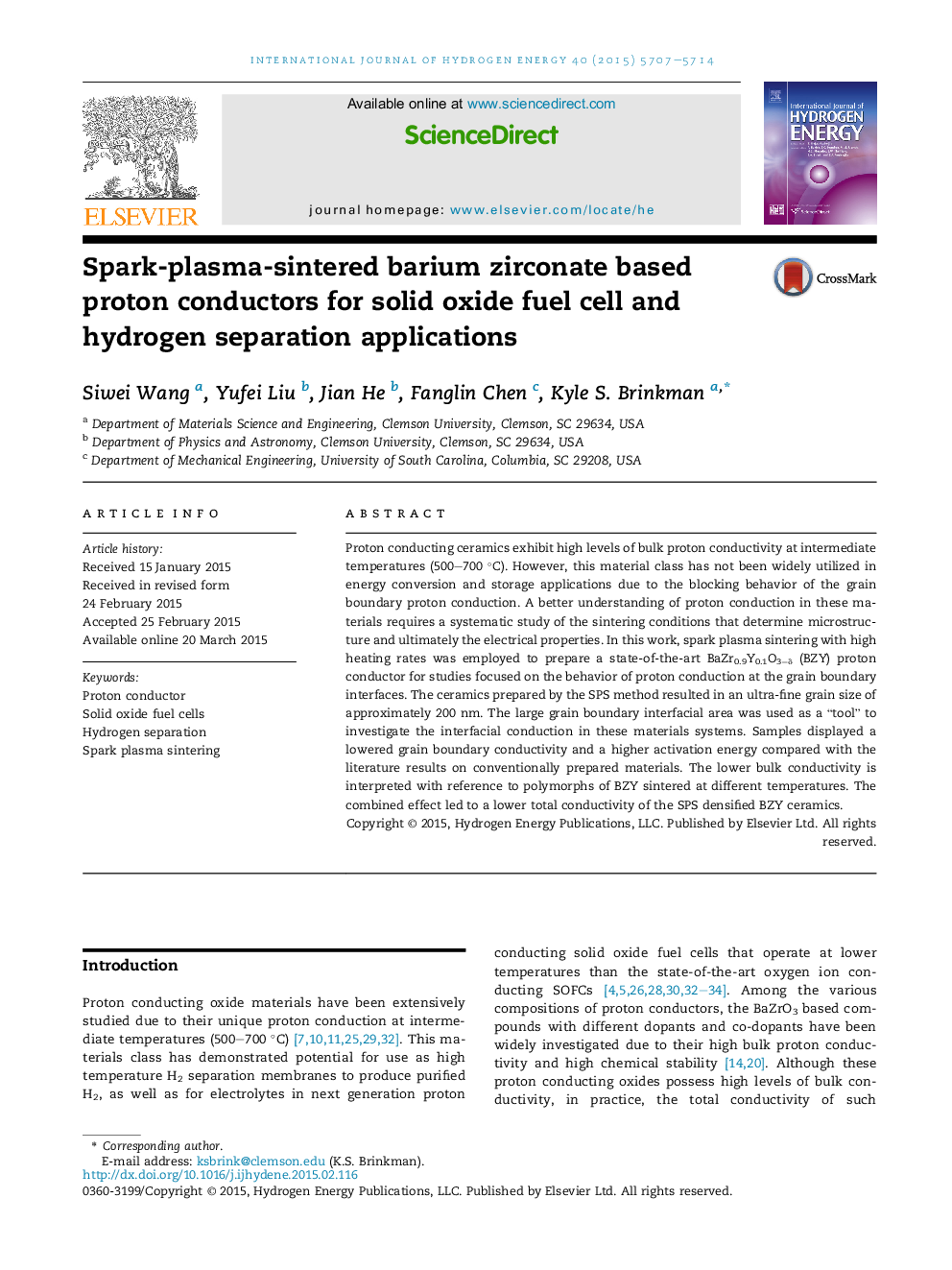| Article ID | Journal | Published Year | Pages | File Type |
|---|---|---|---|---|
| 1275626 | International Journal of Hydrogen Energy | 2015 | 8 Pages |
•BaZr0.9Y0.1O3−δ (BZY) was prepared by spark plasma sintering at 1300 °C for 5 min.•Dense proton conductor ceramics were obtained with grain size ∼200 nm.•Lowered grain boundary conductivity was due to the large grain boundary area.•Reduced bulk conductivity was due to the polymorphs of BZY samples.
Proton conducting ceramics exhibit high levels of bulk proton conductivity at intermediate temperatures (500–700 °C). However, this material class has not been widely utilized in energy conversion and storage applications due to the blocking behavior of the grain boundary proton conduction. A better understanding of proton conduction in these materials requires a systematic study of the sintering conditions that determine microstructure and ultimately the electrical properties. In this work, spark plasma sintering with high heating rates was employed to prepare a state-of-the-art BaZr0.9Y0.1O3−δ (BZY) proton conductor for studies focused on the behavior of proton conduction at the grain boundary interfaces. The ceramics prepared by the SPS method resulted in an ultra-fine grain size of approximately 200 nm. The large grain boundary interfacial area was used as a “tool” to investigate the interfacial conduction in these materials systems. Samples displayed a lowered grain boundary conductivity and a higher activation energy compared with the literature results on conventionally prepared materials. The lower bulk conductivity is interpreted with reference to polymorphs of BZY sintered at different temperatures. The combined effect led to a lower total conductivity of the SPS densified BZY ceramics.
